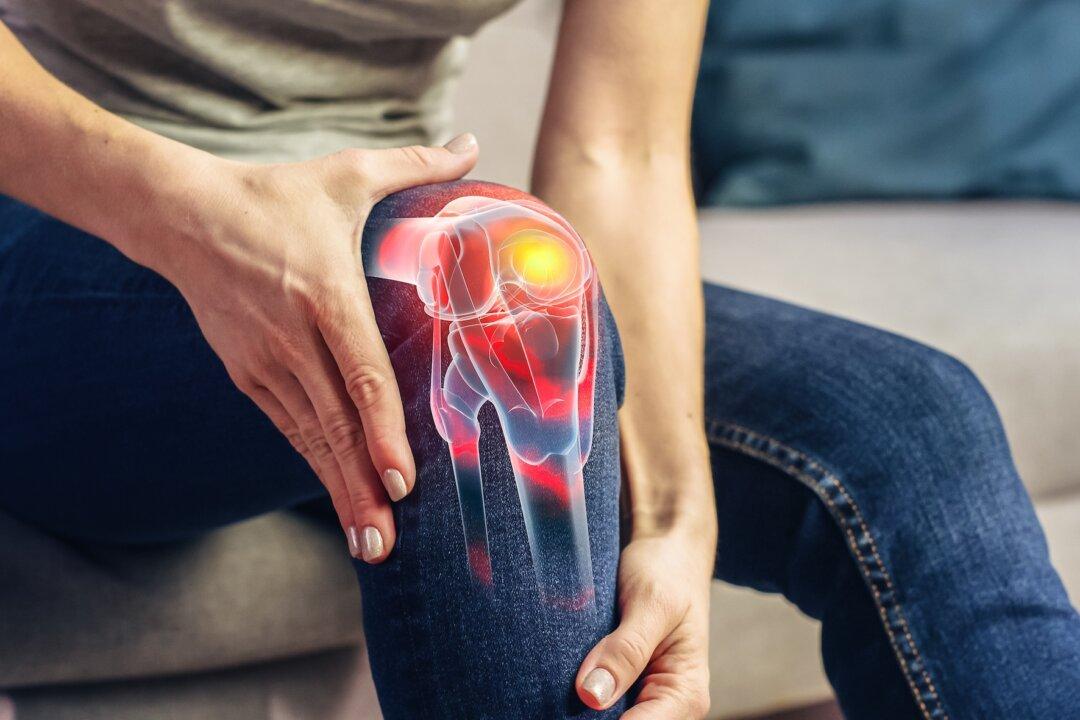- 176 skeletons of people who lived from 6000 to 300 years ago (from U.S. museums)
- 1581 skeletons of people who died between 1905 and 1940, during the early industrial era
- 819 skeletons of people who died between 1976 and 2015 during the modern post-industrial era
Symptoms of Osteoarthritis
People are usually diagnosed as having osteoarthritis if they:- have gradually increasing pain in their knees, hips, hands or spine
- are age 40 or older
- have negative results in the standard blood tests for the known causes of arthritis such as gout or psoriasis
- have pain that is usually worse in the morning when a person first gets up. In osteoarthritis, the pain usually lessens as the person keeps moving. In rheumatoid arthritis, the joints often continue to hurt for more than an hour after a person starts moving about.
- if hands are affected, the swelling of the knuckles and joints caused by osteoarthritis is on the ends of the fingers next to the fingernails (not in the middle finger joints) and at the base of the thumb. Rheumatoid arthritis usually affects the middle joints of the fingers and the joints where the fingers attach to the hand.
Evidence of Inflammation
Your immunity is good for you because it kills germs that try to invade your body and works to heal injured tissues. However, after the germ is gone or the wound is healed, your immunity is supposed to slow down. If your immunity remains active, it uses the same chemicals and cells that attack germs to attack you and that includes destroying the cartilage in your joints. Recent research shows that osteoarthritis can be caused by inflammation, the same overactive immunity that causes heart attacks.- People with osteoarthritis have high blood levels of galectins that turn on a person’s immunity to cause inflammation, just like in rheumatoid arthritis and reactive arthritis (The Journal of Immunology, February 15, 2016;196(4):1910-1921).
- Almost 70 percent of obese people develop knee osteoarthritis (Arthritis and Rheumatism, Sept 15, 2008;59(9):1207-13) and losing as few as 11 pounds reduces risk of developing knee osteoarthritis among women by 50 percent (Arthritis and Rheumatism, August 1998;41(8):1343-55). Excess weight causes inflammation.
- A study of almost 5000 people showed that those who eat a plant-based Mediterranean-type (anti-inflammatory) diet have a much lower prevalence of osteoarthritis (Clin Nutr, Oct 8, 2016).
Exercise Helps to Prevent and Treat Knee Osteoarthritis
• A review of 55 studies showed that weight-bearing exercise reduces pain and improves joint function in people who have osteoarthritis (British Journal of Sports Medicine, September 24, 2015). • An exercise program to strengthen the muscles around the knee is more effective than removing broken cartilage from knees because the exercise program helped stabilize the knee by strengthening the muscles that control knee movement (Br J Sports Med, Nov 15, 2016;50:1426-1427). • A randomized controlled study of 126 people with knee osteoarthritis showed that a combined program of aerobic and strength training for 20 weeks markedly decreased knee pain and increased mobility (Arthritis Care & Research, Aug 30, 2016). No serious side effects occurred from the knee strength and conditioning program. • Exercise strengthens cartilage in women with knee osteoarthritis (Med and Sci in Sprts and Ex. March 23, 2017). High impact exercise for one year strengthened bone and cartilage (J Bone Miner Res, Jan 2014;29(1):192-201). • A review of six studies of 656 men and women with knee osteoarthritis found that exercise improves symptoms of knee pain in osteoarthritis and that it didn’t make much difference whether the knee exercise program was of low or high intensity (Cochrane Database Syst Rev, Oct 29, 2015;(10):CD010203). • Knee surgery called arthroscopic partial meniscectomy to trim a torn knee meniscus is one of the most common surgical procedures done in North America, with more than 750,000 knee arthroscopies done in the United States each year, but surgery has not been shown to be more effective than exercise in treating knee osteoarthritis (N Engl J Med, 2013;368:1675-84; Br J Sports Med, 2016;50:1473-1480 ).My Recommendations
If your joints hurt, try to find out what is causing your pain. Your doctor will do tests to see if you have gout, psoriasis, rheumatoid arthritis or some other known cause. If none are found, you will probably be given a diagnosis of osteoarthritis. If you have sudden locking of your joint and it gets better, and then recurs, you may have “joint mice”, loose pieces of cartilage that slip between the cartilage to cause horrible pain. This can usually be cured by removing these lose pieces by arthroscopy.- lose weight if overweight
- eat an anti-inflammatory diet that includes lots of vegetables, fruit, whole grains, beans, nuts and other seeds, and restricts red meat, all foods and drinks with added sugar and fried foods
- keep blood levels of hydroxy vitamin D above 20 ng/ml
Osteoarthritis always worsens with inactivity, so you need to keep on moving. However, be guided by pain and stop when the pain worsens. You should not run, jump or do sports that involve impact because the force of your foot hitting the ground can break off knee cartilage. Low-impact sports include bicycling and swimming.
It is acceptable to try to ease your pain with NSAIDs (non-steroidal anti-inflammatory drugs), but pain medications do nothing to cure your joint pain and they have many side effects. Take the lowest dose that you need. If the pain becomes so unbearable that it keeps you awake at night, you may want to consider a knee replacement. However, replacing your joint requires driving a spike into the middle of the bones of your knee and that pushes aside the shock-absorbing marrow and weakens the bone to increase your chances of breaking the bones when you fall. In that case, the knee cannot be replaced until the broken bones heal and you may be unable to walk or be bedridden for a very long time.





